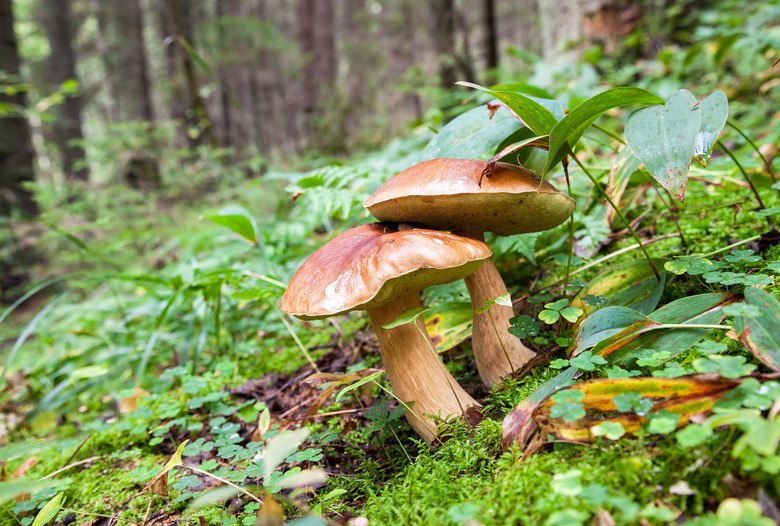The 2 Main Components Of An Ecosystem
Ecosystems consist of life forms existing in a symbiotic relationship with their environment. Life forms in ecosystems compete with one another to become the most successful at reproducing and surviving in a given niche, or environment.
TL;DR (Too Long; Didn't Read)
Two main components exist in an ecosystem: abiotic and biotic. The abiotic components of any ecosystem are the properties of the environment; the biotic components are the life forms that occupy a given ecosystem.
Abiotic Components
Abiotic Components
Abiotic components of an ecosystem consist of the nonorganic aspects of the environment that determine what life forms can thrive. Examples of abiotic components are temperature, average humidity, topography and natural disturbances. Temperature varies by latitude; locations near the equator are warmer than are locations near the poles or the temperate zones. Humidity influences the amount of water and moisture in the air and soil, which, in turn, affect rainfall. Topography is the layout of the land in terms of elevation. For example, according to the University of Wisconsin, land located in the rain shadow of a mountain will receive less precipitation. Natural disturbances include tsunamis, lightning storms, hurricanes and forest fires.
Biotic Components
Biotic Components
The biotic components of an ecosystem are the life forms that inhabit it. The life forms of an ecosystem aid in the transfer and cycle of energy. They are grouped in terms of the means they use to get energy. Producers such as plants produce their own energy without consuming other life forms; plants gain their energy from conducting photosynthesis via sunlight. Consumers exist on the next level of the food chain. There are three main types of consumers: herbivores, carnivores and omnivores. Herbivores feed on plants, carnivores get their food by eating other carnivores or herbivores, and omnivores can digest both plant and animal tissue.
Interaction
Interaction
Biotic components and abiotic components of an ecosystem interact with and affect one another. If the temperature of an area decreases, the life existing there must adapt to it. Global warming, or the worldwide increase in temperature due to the greenhouse effect, will speed up the metabolism rates of most organisms. Metabolic rate increases with temperature because the nutrient molecules in the body are more likely to contact and react with one another when excited by heat. According to "Science News," tropical ectothermic — cold-blooded — organisms could experience increased metabolic rates from an increase of as little as 5 degrees Celsius because their internal temperature is almost entirely dependent on external temperature. To adapt to these circumstances, cold-blooded life forms could reside in the shade and not actively search for food during daylight hours when the sun is at its brightest.
Cite This Article
MLA
Smathers, Michael O.. "The 2 Main Components Of An Ecosystem" sciencing.com, https://www.sciencing.com/2-main-components-ecosystem-2576/. 23 April 2018.
APA
Smathers, Michael O.. (2018, April 23). The 2 Main Components Of An Ecosystem. sciencing.com. Retrieved from https://www.sciencing.com/2-main-components-ecosystem-2576/
Chicago
Smathers, Michael O.. The 2 Main Components Of An Ecosystem last modified August 30, 2022. https://www.sciencing.com/2-main-components-ecosystem-2576/
